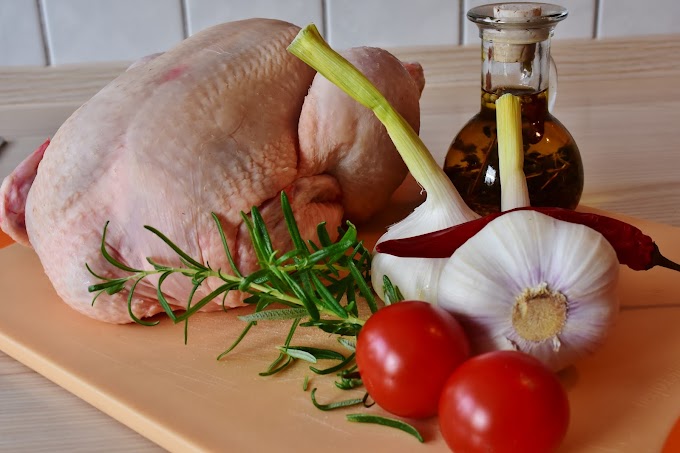Red Wine - A Depth Guide
If you're a lover of red wine, but you don't know how it's made? what to choose? which red wine for a particular season? Food pairs? storage? health benefits? or what varieties there are? then this article will shed light on it. It is beneficial to gain some knowledge on red wine as wine is part of our life.The grape skin gives red wine it's distinct colour. Red wine is made from either red or black grapes, with the skin left intact during the fermentation process called maceration. The longer the skin is left on the grape, the deeper red it will result in. Rose wine is a pink colored wine, because the skin is only left on the grape for a short period of time. An individual wine's colour depends largely on what type of grape was used to make it and how long the skin was left in with the juice before being extracted.
There are many different types of red wine but they are usually judged by their "body." For example, a light-bodied wine is not too demanding on the mouth and taste buds. It goes well with food that is flavor intensive.
On the other hand, there is the medium-bodied red wine which is a slightly heavier wine (e.g. Shiraz, Merlot, etc.) but not as heavy and as powerful as a full-bodied wine like French Bordeaux wines. Full-bodied wines are denser and have a higher alcohol content.Red wine may be sweet, dry or fruity. The dry wines have very little residual sugar, whereas the sweeter red wines have a sweeter taste, and are considered dessert wines. The following wine list can help you determine which wine goes best with your meal, and is one method of classifying your wine:
Merlot (mur-LO)
This is a versatile wine that can be paired with a wide variety of foods such as red meats, poultry and even salads. It goes well with pasta dishes served with red sauce, lamb or prime rib. In recent years, Merlot has soared in popularity.
Cabernet Sauvignon (cab-er-NAY SO-vin-yon)Cabernet sauvignon is one of the world's best varieties and is commonly known as the king of the red wines. This is produced from grapes originally grown in the Bordeaux region of France. Cabernets can be full-bodied or medium-bodied and have high tannin content. They are best served with foods such as red meats, hearty red pastas, strong-flavored cheese, lamb and dark chocolate. It also goes well with beef dishes, such as stroganoff or steak and also with duck or salmon.
Pinot Noir (PEE-no NWA)
Being known as the noblest red wine grape, pinot noir is extremely difficult to grow. However, when conditions are correct it often produces an exceptional wine with great complexity and flavours. This wine is produced from Pinot Noir grapes grown in the vineyards of Burgundy in France. Since these grapes are difficult to grow, Pinot Noir is produced in smaller quantities and is thus more expensive than other wines. This wine is well-paired with various types of meats such as beef, lamb and poultry. It also goes well with pork, turkey and soft cheeses such as brie or camembert.
Shiraz/Syrah (sih-RAH)It is known as Shiraz in Australia and South Africa, and as Syrah in California and France. These are full-bodied wines produced from a grape interchangeably known as Sirah or Syrah depending on the place where it is grown. These wines are made in the US and France under the name of Syrah while Sirah is used in other regions such as Australia, Italy and Portugal. This wine is a deep red in colour and is often served with food such as beef or wild game as well as with dark chocolate. These wines taste like blackberry. They go well with tenderloins, onion soup, or BBQ ribs and roasts.
Sangiovese (san-geeo-VEHS-eh)
Sangiovese is the signature red wine grape of the Tuscany region of Italy. It has a medium body with fresh berry and plum flavours. Although it is enjoyable as a varietal wine, it is often blended with Carbernet Sauvignon to build upon its flavor.
Barbera (bar-BEHR-uh)
Though not as popular, Barbera is a classic red of Italian origin that has similar attributes with Merlot. It is chiefly grown in the Piedmont region of Italy and is also widespread in California. It has a silky texture and excellent acidity, with rich flavors of juicy black cherry and plum.
Zinfandel (ZIHM-fan-dell)
Of all the grape varieties, Zinfandel is perhaps the world's most versatile one, making everything from blush white wines to heavy rich red wines. It is one of the oldest grapes to be grown in California, and most always in California. A red zinfandel has low to moderate acidity and medium to full body. It is known for its rich colour scheme, high tannin level and high alcohol content. The typical taste of zinfandel is often a zesty flavor with berries, spice and black pepper.
Which wines pairs the season?
1. Winter: It is not so much that certain red wines taste better in the winter, but rather that they taste better with what you eat in the winter. Winter meals are best accompanied with full bodied, spicy Shiraz and Syrah red wines.
2. Summer: Pairing red wines with grilled food is easy. First, consider how hearty the food is - steak, burgers, sausages taste better with red wines. Fish, chicken, and artichokes typically taste better with white wines. After you narrow it down to red wines or white wines, think about the marinade.
3. Fall: Fuller-bodied, richer wines go well with the heavy flavours of fall food, gamy meats especially. Syrahs are good reds to choose for fall.
4. Spring: Grassy and herbaceous white wines like Sauvignon blanc are perfect for when you're gearing up for warmer temperatures.
Do you know why red wines ages better than white and are aged?
It is the tannin which gives the smell of wine in your mouth. Over time, the qualities of the tannin will mellow and blend harmoniously with the other characteristics of the wine. This is one of the main reasons that red wines usually age better than whites.
Health Benefits of Red Wine
It helps with sleep - while people are usually cautioned about alcohol actually interfering with sleep, red wine which contains a key ingredient called melatonin can help with sleep. This anti-oxidant helps to regulate one's internal clock and besides helping with sleep, melatonin can also help to prevent cancer.
It is good for the heart - consuming moderate amounts of red wine can do a number of good things for the heart. Because it contains antioxidants called flavonoids, drinking red wine can raise HDL levels, which is the good cholesterol that everyone wants; it can also lower LDL levels, which is often described as bad cholesterol. Drinking red wine can also act as a blood thinner which can prevent dangerous clotting.
It may reduce the risk of disease - as mentioned, red wine contains antioxidants that are not only good for the heart but for the rest of the body as well. Antioxidants can actually repair cells that have been damaged by free radicals and can reduce the risk of diseases such as diabetes, macular degeneration and certain types of cancer.
It contains resveratrol - of all the antioxidants, resveratrol is probably the one getting most of the attention. Resveratrol is found in the skin and seeds of grapes and can also help to prevent some types of cancer. But another benefit of this powerful antioxidant is that it can help reverse aging helping one to have increased longevity. Resveratrol may also help to prevent age-related disorders such as Alzheimer's disease and dementia. Men can benefit from drinking red wine because the resveratrol it contains may also help to prevent prostate cancer. In fact, some experts suggest that men who drink one glass of red wine a day can cut their chances of getting prostate cancer in half.It can protect you from getting the flu - research shows that by drinking a glass of wine a day, consumers of red wine can reduce their chances of getting influenza by 20 percent. Drinking red wine while you have a cold could also prove to be beneficial.
It helps to calm the mind - For some people it is common that after a hard day, the first thing they do upon coming home is open up a bottle of wine. This is because red wine is a natural tranquilizer and can help reduce stress and anxiety.
Nutritional Value
Red wine contains vitamins and minerals in small amounts, red wine does contain vitamins and minerals such as:
Potassium : this mineral and electrolyte helps to regulate the heartbeat, aids in protein and nucleic acid synthesis, helps produce energy and convert blood sugar into glycogen.
Fluoride : this mineral can help prevent tooth decay, reduce risk of cavities and keeps tooth enamel strong.
Phosphorous : this mineral helps convert food into energy. Phosphorous also helps with kidney function, metabolism, cell growth and heart muscle contraction.
Choline : this vitamin is part of the vitamin B family that helps to maintain overall good health. Choline may also help with memory function and is being used in Alzheimer's research.
A few more benefits include providing energy, aids in digestion, stimulates the appetite and can help to restore nutritional balance.
For most, drinking red wine can be a good thing. It is good to remember though that drinking more wine than the recommended amounts can have a reversed effect.
Red wine serving TemperatureThe best rule of thumb to use for red wines is to store them at a temperature between 50 and 60 degrees Fahrenheit and if temperatures approach 90 degrees wine can be easily damaged.
Most red wines should be served at room temperature, which means an average of 60 to 65 degrees Fahrenheit. If the wine is served too warm, the taste will be dominated by the alcohol and if it is served to cold, it will definitely be less flavorful. Red sweet should be served much colder than room temperature, about 45 degrees Fahrenheit. Lighter reds like Pinot Noir and Zinfandel should be served around 60 degrees Fahrenheit. Cabernet Sauvignon and Merlot, full bodied red wines, are best when served at 65 degrees Fahrenheit.



























0 Comments
If you have any doubts , please let me know